Results 41 to 49 of 49
Thread Information
Users Browsing this Thread
There are currently 1 users browsing this thread. (0 members and 1 guests)
-
06-24-2019, 09:47 PM #41Do the rules of environmental protection extend to exoplanets beyond our solar system?
Saturday, June 22, 2019 by: Edsel Cook
Tags: alien life, climate science, cosmic, environ, environment, environmental regulations, exoplanets, extraterrestrial life, galaxy, goodscience, Milky Way galaxy, outer space, pollution, solar system, space exploration, space travel
2,510 Views
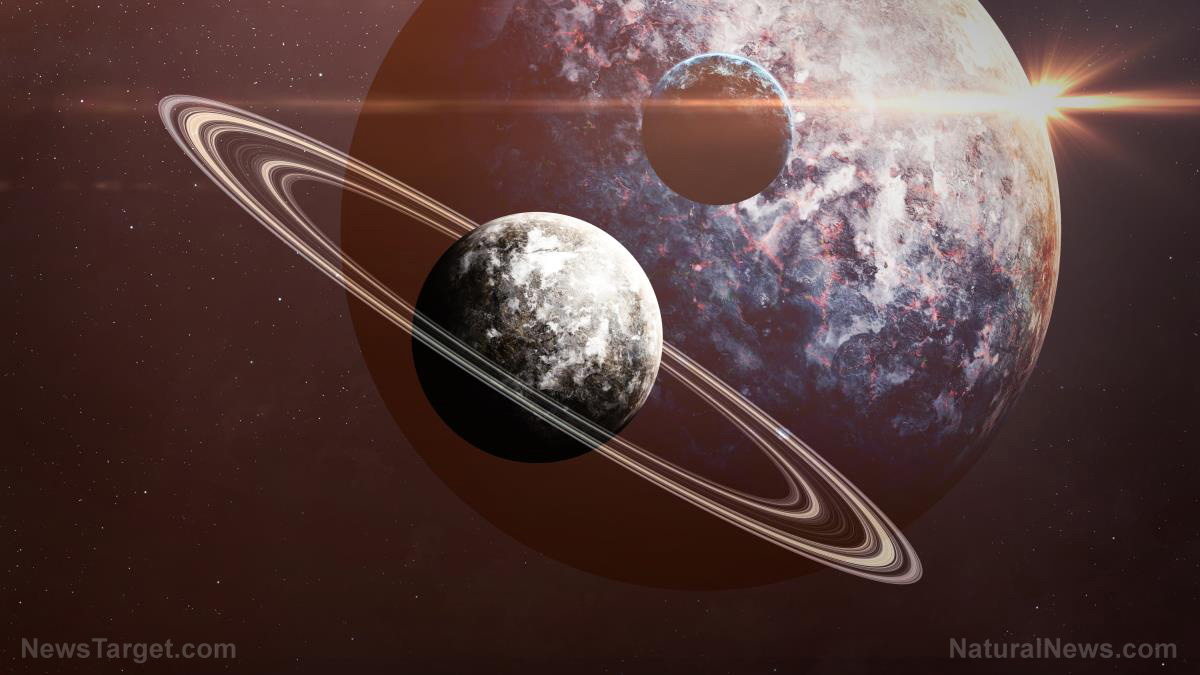
(Natural News) A German researcher did not believe it was possible to justify the environmental protection of planets outside our solar system on the grounds of potential use by humankind in the future. He also believed it was irrelevant to regulate the environments of exoplanets that can support life if the same worlds happened to be lifeless in the first place.
Existing environmental regulations apply to the planets within our solar system. Furthermore, extraterrestrial lifeforms only merit protection if it is possible to investigate them.
There are many exoplanets throughout the Milky Way galaxy. The atmospheres of many of these worlds contain sufficient amounts of oxygen to support terrestrial life, such as human beings. However, most of the alien planets lack any form of life on their surface.
Goethe University researcher Claudius Gros analyzed the issue of environmental protection for exoplanets. He noted that environmental regulations sought to ensure that future generations of human beings could enjoy access to clean air and water necessary for their survival and health.
Environmental regulations place human needs ahead of the needs of other developed organisms like animals and plants. Microorganisms and other lower life forms get the short end of the stick. Bacteria and the like only get protected if they are useful for humans. (Related: New, exotic class of planets outside our solar system made out of GEMS.)
Environmental regulations prioritize human needs and judges alien life by its value to research
A theoretical physicist at Goethe’s Frankfurt campus, Gros looked at real-life issues that involve environmental protection on Earth. He used the terrestrial analogs as the measuring stick for the application of environmental regulations to exoplanets.
The Committee on Space Research (COSPAR) set up international agreements regarding space research in the solar system. Signatories agreed to avoid contaminating existing lifeforms or evidence of earlier organisms.
For example, Europa and other moons might contain simple forms of life. Meanwhile, Mars supposedly supported life in the distant past. The COSPAR regulations sought to preserve the potential evidence of extraterrestrial life for scientific studies.
Notably, the COSPAR guidelines did not say anything about extraterrestrial life being important in and of itself. The protection of alien life depended on its value to human research.
Expert says humans are not going to bother protecting the environments of exoplanets
The COSPAR agreements apply within the boundaries of our solar system. Experts have not yet considered extending those environmental regulations to exoplanets in other planetary systems. Perhaps they can spare the idea some effort, given Breakthrough Starshot and other initiatives are working on small space probes that can reach distant stars.
Gros said that it made little sense for space agencies and space-capable nations to bother with setting environmental regulations for exoplanets. For one thing, the current state of space technology meant spacecraft needed thousands of years to reach another star system. By the time they arrived, their makers would be long dead.
Also, the absence of life on an exoplanet removed any urge to protect its environment. Why waste time and energy preserving the environment of a world if there wasn’t anything alive on it at the moment?
Furthermore, free oxygen disrupted the chemical reactions needed for the formation of primitive life. By the time humans reached oxygen-rich exoplanets, the worlds might still be devoid of life.
“Whether there is another way for life to form on these oxygen planets is an open question at this time,” explained Gros. “If not, we would find ourselves living in a universe in which most of the habitable planets are lifeless, and thus suitable for settlement by terrestrial life forms.”
Sources include:
Goethe-University-Frankfurt.de
ARXIV.org
https://www.naturalnews.com/2019-06-...ate-brown.htmlIf you're gonna fight, fight like you're the third monkey on the ramp to Noah's Ark... and brother its starting to rain. Join our efforts to Secure America's Borders and End Illegal Immigration by Joining ALIPAC's E-Mail Alerts network (CLICK HERE)
-
06-26-2019, 06:51 PM #42If you're gonna fight, fight like you're the third monkey on the ramp to Noah's Ark... and brother its starting to rain. Join our efforts to Secure America's Borders and End Illegal Immigration by Joining ALIPAC's E-Mail Alerts network (CLICK HERE)
-
06-26-2019, 06:53 PM #43
The golden asteroid that could make everyone on Earth a billionaire...
The golden asteroid that could make everyone on Earth a billionaire
Published time: 26 Jun, 2019 08:48 Edited time: 26 Jun, 2019 13:47

© Getty Images / MARK GARLICK / SCIENCE PHOTO LIBRARY
- 9467
- 6
Whether it was the Big Bang, Midas or God himself, we don’t really need to unlock the mystery of the origins of gold when we’ve already identified an asteroid worth $700 quintillion in precious heavy metals.
If anything launches this metals mining space race, it will be this asteroid--Psyche 16, taking up residence between Mars and Jupiter and carrying around enough heavy metals to net every single person on the planet close to a trillion dollars.
The massive quantities of gold, iron and nickel contained in this asteroid are mind-blowing. The discovery has been made. Now, it’s a question of proving it up.
NASA plans to do just that, beginning in 2022.
Also on rt.com Origins of gold discovered in space Of course, says veteran miner Scott Moore, CEO of EuroSun Mining “The ‘Titans of Gold’ now control hundreds of the best-producing properties around the world, but the 4-5 million ounces of gold they bring to the market every year pales in comparison to the conquests available in space.”
In the decades to come, if you want to be a gold titan, you’ll have to get your feet off the ground. The real titans will be far from Earth.
Moore should know: He heads up a junior mining company that is seeking a seat at the titan table with the biggest in-development gold mine in Europe.
The 21st-Century Gold Rush
Can we actually extract this space gold? That is the quintillion-dollar question, certainly.
Speaking to Outerplaces, Professor John Zarnecki, president of the Royal Astronomical Society, estimates that it would take around 25 years to get ‘proof of concept’, and 50 years to start commercial production.
Of course, it all depends on two key things: Economic feasibility and our advancement of space technology.
And then, we’re not alone, either. There are other world powers who would like to get their hands on that asteroid, as well. China definitively plans to dominate this race.
Mitch Hunter-Scullion, founder of the UK-based Asteroid Mining Company, tells the BBC that this is definitively the next industry “boom”.
Also on rt.com Gold & platinum came to Earth in a massive star explosion – study “Once you set up the infrastructure then the possibilities are almost infinite,” he said. “There’s an astronomical amount of money to be made by those bold enough to rise to the challenge of the asteroid rush.”
EuroSun’s Moore agrees: “What we’re doing on the ground now may be impressive, but like everything else, even gold exploration in space is only a matter of infrastructure. We’ll get to it, eventually.”
But it’s not just about the quintillion-dollar prospects of the Asteroid Belt, which is 750 million kilometers from Earth.
“This may be the Holy Grail of space exploration for gold, but it won’t be the first stop on this adventure,” Moore says.
There are also Near-Earth asteroids, which pass close to Earth and could be pushed into an orbit from which water and other elements could be extracted.
Then there’s the moon, which holds resources from gold and platinum group metals to Helium-3, water and rare earth metals. Even though mining operations require gravity and the Moon’s is only one-sixth of Earth’s, scientists say there is enough gravity to make it work.
The Global Asteroid Mining Market
Yes, there is already a global market for asteroid mining, and Allied Market Research estimates that it will top $3.8 billion by 2025.
They’re counting ongoing and future space missions, the rise in inflow of investments in space mining technologies, and the growing use of print materials obtained from asteroids in 3D printing technology.
According to Allied, while the spacecraft design segment of this market accounted for four-fifths of the total revenue in 2017 and is expected to continue to dominate through 2025, the big change here will be in the space mining segment, or the “operation segment”. That segment is expected to grow at a CAGR of over 29% by 2025 “due to a surge in investment by public and private stakeholders in space mining technologies for resource exploitation”.
Also on rt.com Bitcoin v gold: Peter Schiff tells Boom Bust which is the real safe haven at time of turmoil “You can’t just think of space mining as something that will suddenly happen in 25 or 50 years,” says EuroSun’s Moore. “It’s already happening from an investment perspective. And the Asteroid Belt is just one aspect of this market. The entire global space market is worth hundreds of billions already.”
Indeed, Morgan Stanley estimates the global space economy to be worth $350 billion today. By 2040, it will be worth a cosmic $2.7 trillion.
Nor is the Psyche-16 Asteroid the only thing of interest in the Belt. Another small asteroid measuring 200 meters in length could be worth $30 billion in platinum.
Who Will Get There First?
China has vowed to dominate this race, and that’s an easier game for a country that controls all the major natural resource companies and maintains a tight leash on tech developers.
That’s not to say that the US doesn’t have ambitions here. The difference, though, is stark. While NASA is focused on space exploration and scientific missions, China is focused on a space-based economy that is zeroing in on long-term wealth generation.
Even Europe, where EuroSun is developing a major goldmine in Romania, has its hand in the game. In January, the European Space Agency(ESA) announced a deal with ArianeGroup, the parent company of Arianespace, to study a prep mission to the moon in 2025. It’s got natural resources on its mind.
Also on rt.com Moon mining: ESA sets up lunar project to secure oxygen & water by 2025 Even tiny Luxembourg has 10 space-mining companies registered since 2016, with some targeting space ventures to the Moon, and others eyeing near-Earth asteroids for mining.
Tokyo-based iSpace, for instance, is a private space exploration company that plans to complete a lunar orbit in 2020, and a soft landing in 2021.
For Moore, the prospect is daunting, even if it is the clear future reality, because mining in EuroSun’s Rovina Valley project in west-central Romania has been a cakewalk, both in terms of geology and infrastructure. Everything lines up for a large, low-cost project (the biggest in-development gold mine in Europe.) That won’t be the case in space, but it’s a big bill that governments will want to help foot or risk losing their place in space.
Whoever gets there first will become the new god of gold, and the competition is heating up.
This article was originally published on Oilprice.com
https://www.rt.com/business/462703-g...e-billionaire/If you're gonna fight, fight like you're the third monkey on the ramp to Noah's Ark... and brother its starting to rain. Join our efforts to Secure America's Borders and End Illegal Immigration by Joining ALIPAC's E-Mail Alerts network (CLICK HERE)
-
06-28-2019, 10:48 PM #44
The Golden Asteroid Worth $700 Quintillion
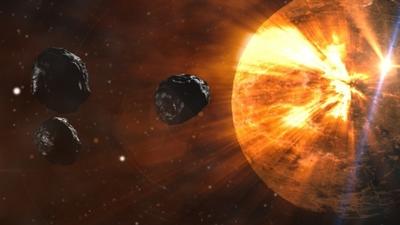
Can we actually extract this space gold? That is the quintillion-dollar question, certainly...
Fri, 06/28/2019 - 20:45
2SHARES
Authored by Joao Piexe via OilPrice.com,
Whether it was the Big Bang, Midas or God himself, we don’t really need to unlock the mystery of the origins of gold when we’ve already identified an asteroid worth $700 quintillion in precious heavy metals.
If anything launches this metals mining space race, it will be this asteroid - Psyche 16, taking up residence between Mars and Jupiter and carrying around enough heavy metals to net every single person on the planet close to a trillion dollars.
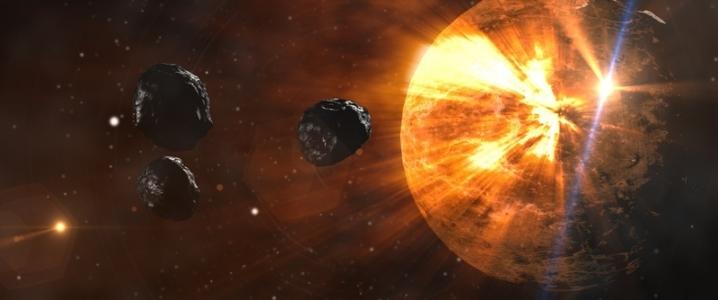
The massive quantities of gold, iron and nickel contained in this asteroid are mind-blowing. The discovery has been made. Now, it’s a question of proving it up.
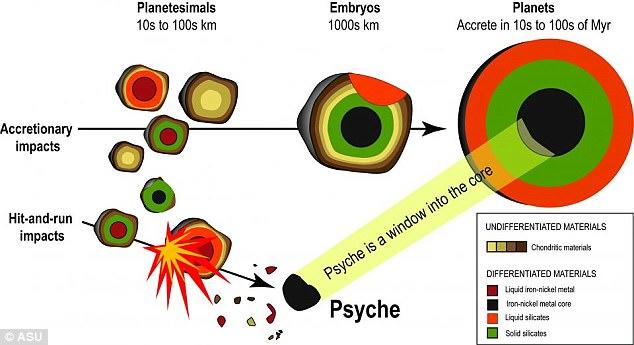
NASA plans to do just that, beginning in 2022.
Of course, says veteran miner Scott Moore, CEO of EuroSun Mining “The ‘Titans of Gold’ now control hundreds of the best-producing properties around the world, but the 4-5 million ounces of gold they bring to the market every year pales in comparison to the conquests available in space.”
In the decades to come, if you want to be a gold titan, you’ll have to get your feet off the ground. The real titans will be far from Earth.
Moore should know: He heads up a junior mining company that is seeking a seat at the titan table with the biggest in-development gold mine in Europe.
The 21st-Century Gold Rush
Can we actually extract this space gold? That is the quintillion-dollar question, certainly.
Speaking to Outerplaces, Professor John Zarnecki, president of the Royal Astronomical Society, estimates that it would take around 25 years to get ‘proof of concept’, and 50 years to start commercial production.
Of course, it all depends on two key things: Economic feasibility and our advancement of space technology.
And then, we’re not alone, either. There are other world powers who would like to get their hands on that asteroid, as well. China definitively plans to dominate this race.
Mitch Hunter-Scullion, founder of the UK-based Asteroid Mining Company, tells the BBC that this is definitively the next industry “boom”.“Once you set up the infrastructure then the possibilities are almost infinite,” he said.EuroSun’s Moore agrees:
“There’s an astronomical amount of money to be made by those bold enough to rise to the challenge of the asteroid rush.”
“What we’re doing on the ground now may be impressive, but like everything else, even gold exploration in space is only a matter of infrastructure. We’ll get to it, eventually.”But it’s not just about the quintillion-dollar prospects of the Asteroid Belt, which is 750 million kilometers from Earth.
“This may be the Holy Grail of space exploration for gold, but it won’t be the first stop on this adventure,” Moore says.There are also Near-Earth asteroids, which pass close to Earth and could be pushed into an orbit from which water and other elements could be extracted.
Then there’s the moon, which holds resources from gold and platinum group metals to Helium-3, water and rare earth metals. Even though mining operations require gravity and the Moon’s is only one-sixth of Earth’s, scientists say there is enough gravity to make it work.
The Global Asteroid Mining Market
Yes, there is already a global market for asteroid mining, and Allied Market Research estimates that it will top $3.8 billion by 2025.
They’re counting ongoing and future space missions, the rise in inflow of investments in space mining technologies, and the growing use of print materials obtained from asteroids in 3D printing technology.
According to Allied, while the spacecraft design segment of this market accounted for four-fifths of the total revenue in 2017 and is expected to continue to dominate through 2025, the big change here will be in the space mining segment, or the “operation segment”. That segment is expected to grow at a CAGR of over 29% by 2025 “due to a surge in investment by public and private stakeholders in space mining technologies for resource exploitation”.“You can’t just think of space mining as something that will suddenly happen in 25 or 50 years,” says EuroSun’s Moore.Indeed, Morgan Stanley estimates the global space economy to be worth $350 billion today. By 2040, it will be worth a cosmic $2.7 trillion.
“It’s already happening from an investment perspective. And the Asteroid Belt is just one aspect of this market. The entire global space market is worth hundreds of billions already.”
Nor is the Psyche-16 Asteroid the only thing of interest in the Belt. Another small asteroid measuring 200 meters in length could be worth $30 billion in platinum.
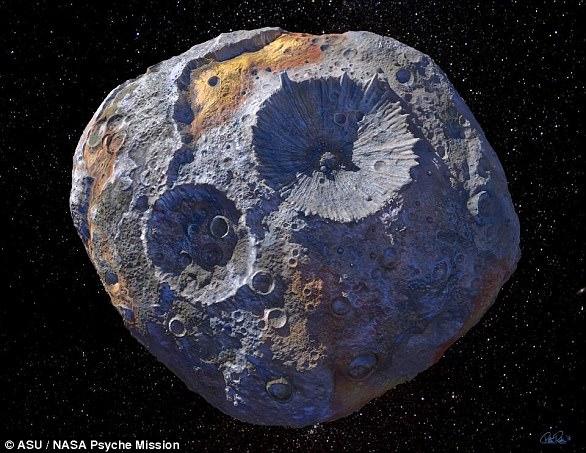
Who Will Get There First?
China has vowed to dominate this race, and that’s an easier game for a country that controls all the major natural resource companies and maintains a tight leash on tech developers.
That’s not to say that the U.S. doesn’t have ambitions here. The difference, though, is stark. While NASA is focused on space exploration and scientific missions, China is focused on a space-based economy that is zeroing in on long-term wealth generation.
Even Europe, where EuroSun is developing a major goldmine in Romania, has its hand in the game. In January, the European Space Agency (ESA) announced a deal with ArianeGroup, the parent company of Arianespace, to study a prep mission to the moon in 2025. It’s got natural resources on its mind.
Even tiny Luxembourg has 10 space-mining companies registered since 2016, with some targeting space ventures to the Moon, and others eyeing near-Earth asteroids for mining.
Tokyo-based iSpace, for instance, is a private space exploration company that plans to complete a lunar orbit in 2020, and a soft landing in 2021.
For Moore, the prospect is daunting, even if it is the clear future reality, because mining in EuroSun’s Rovina Valley project in west-central Romania has been a cakewalk, both in terms of geology and infrastructure. Everything lines up for a large, low-cost project (the biggest in-development gold mine in Europe.) That won’t be the case in space, but it’s a big bill that governments will want to help foot or risk losing their place in space.
Whoever gets there first will become the new god of gold, and the competition is heating up.
A few companies that could vie for a spot in the space-race are majors like…
Seabridge Gold Inc. (NYSE:SA) (TSX:SEA)
Seabridge is an ambitious young company taking the industry by storm. It has a unique strategy of acquiring promising properties while precious metals prices are low, expanding through exploration, and then putting them up for grabs as prices head upward again.
The company owns four core assets in Canada; the KSM project, which is one of the world’s largest underdeveloped projects measured by reserves, Courageous Lake, a historically renowned property, and Iskut, a product of a recent acquisition by Seabridge.
Recently, Seabridge closed a major extension deal to continue expansion at its KSM project. CEO Rudi Fronk stated: "We are pleased that our EA Certificate has been renewed until 2024 under the same terms and conditions, reaffirming the Government of British Columbia's support for KSM and the robustness of the original 2014 EA.”
Teck Resources (NYSE:TECK) (TSX:TECK)
Teck could be one of the best-diversified miners out there, with a broad portfolio of Copper, Zinc, Energy, Gold, Silver and Molybdenum assets. Its free cash flow and a lower volatility outlook for base metals in combination with a potential trade war breakthrough could send the stock higher in H2 of this year.
Teck’s share price stabilized last year and many investment banks now see the stock as undervalued. Low prices for Canadian crude and disappointing base metals prices weighed on Q4 earnings.
Despite its struggles, however, Teck Resources recently received a favorable investment rating from Fitch and Moody’s, and will likely benefit from its upgraded score. “Having investment grade ratings is very important to us and confirms the strong financial position of the company,” said Don Lindsay, President and CEO. “We are very pleased to receive this second credit rating upgrade.”
Kinross Gold Corporation (NYSE:KGC) (TSX:K)
Kinross Gold Corporation is relatively new on the scene, founded in the early 90s, but it certainly isn’t lacking drive or experience. In 2015, the company received the highest ranking for of any Canadian miner in Maclean's magazine's annual assessment of socially responsible companies.
While Kinross posted a significant loss in the fourth quarter of 2018, the company is making strong moves to turn around its earnings, including the hiring of a new CFO, Andrea S. Freeborough.
“Andrea’s successful track record at Kinross and throughout her career, including accounting, international finance, M&A, and deep management experience, will be an excellent addition to our leadership team,” said Mr. Rollinson. “We have great talent at Kinross and succession planning is a key aspect of retaining that talent for the future success of our Company.”
Wheaton Precious Metals Corp. (NYSE:WPM) (TSX:WPM)
Wheaton is a company with its hands in operations all around the world. As one of the largest ‘streaming’ companies on the planet, Wheaton has agreements with 19 operating mines and 9 projects still in development. Its unique business model allows it to leverage price increases in the precious metals sector, as well as provide a quality dividend yield for its investors.
Recently, Wheaton sealed a deal with Hudbay Minerals Inc. relating to its Rosemont project. For an initial payment of $230 million, Wheaton is entitled to 100 percent of payable gold and silver at a price of $450 per ounce and $3.90 per ounce respectively.
Randy Smallwood, Wheaton's President and Chief Executive Officer explained, "With their most recent successful construction of the Constancia mine in Peru, the Hudbay team has proven themselves to be strong and responsible mine developers, and we are excited about the same team moving this project into production. Rosemont is an ideal fit for Wheaton's portfolio of high-quality assets, and when it is in production, should add well over fifty thousand gold equivalent ounces to our already growing production profile."
Eldorado Gold Corp. (NYSE:EGO) (ELD.TO)
This Canadian mid-cap miner has assets in Europe and Brazil and has managed to cut cost per ounce significantly in recent years. Though its share price isn’t as high as it once was, Eldorado is well positioned to make significant advancements in the near-term.
In 2018, Eldorado produced over 349,000 ounces of gold, well above its previous expectations, and is set to boost production even further in 2019. Additionally, Eldorado is planning increased cash flow and revenue growth this year.
Eldorado’s President and CEO, George Burns, stated: “As a result of the team’s hard work in 2018, we are well positioned to grow annual gold production to over 500,000 ounces in 2020. We expect this will allow us to generate significant free cash flow and provide us with the opportunity to consider debt retirement later this year.
https://www.zerohedge.com/news/2019-06-26/golden-asteroid-worth-700-quintillionIf you're gonna fight, fight like you're the third monkey on the ramp to Noah's Ark... and brother its starting to rain. Join our efforts to Secure America's Borders and End Illegal Immigration by Joining ALIPAC's E-Mail Alerts network (CLICK HERE)
-
07-03-2019, 09:37 PM #45
Map Of Mars: The Geology Of The Red Planet
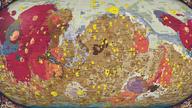
Although the unique reddish hue has been a key defining characteristic of Mars in culture for centuries... there is much more to Mars than its color upon closer observation...
Wed, 07/03/2019 - 21:00
2 SHARES
For centuries, Mars has been mythically defined by its characteristic red appearance.
In Babylonian astronomy, Mars was named after Nergal, the deity of fire, war, and destruction. In Chinese and Japanese texts, the planet was known as 火星, the fire star.
Although this unique reddish hue has been a key defining characteristic of Mars in culture for centuries, Visual Capitalist's Nicholas LePan notes that today we now know that it’s the iron oxide soil of the Martian landscape that makes it the “Red Planet” – and that there is much more to Mars than its color upon closer observation.
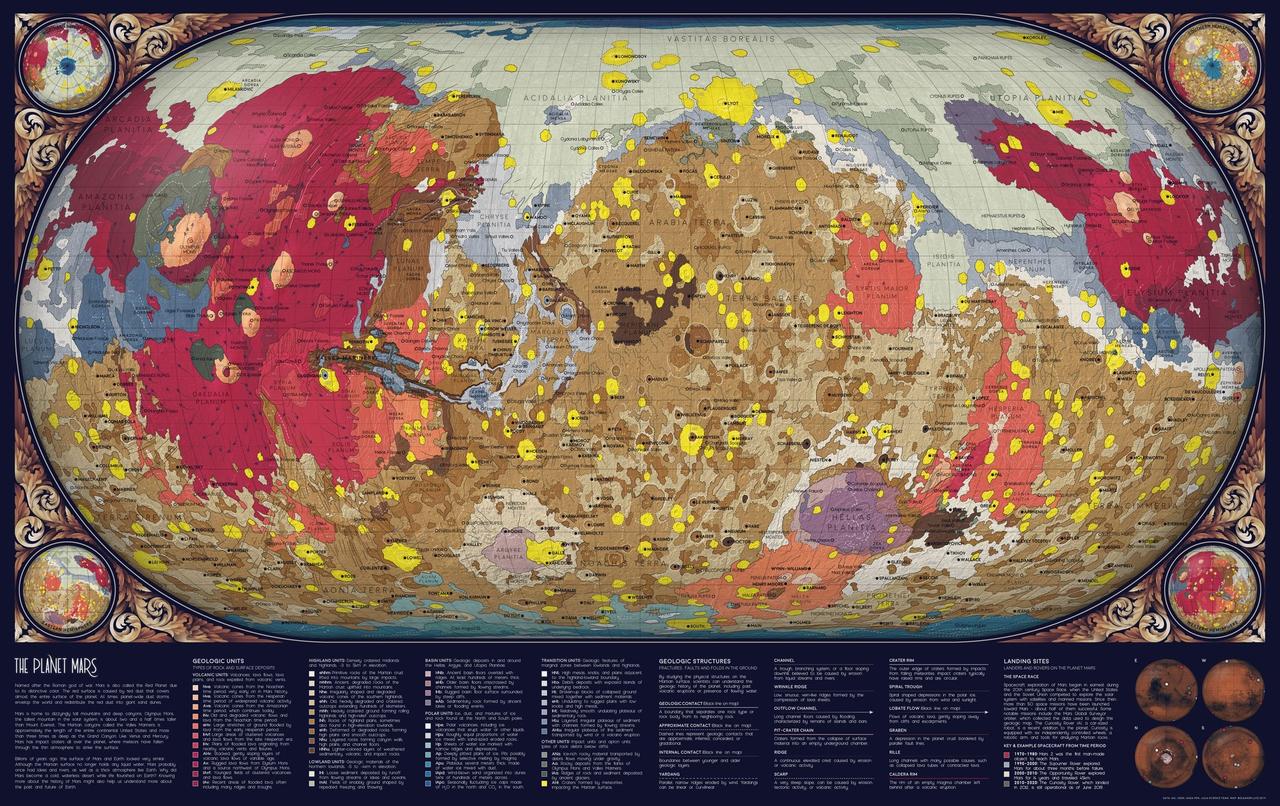
Above, today’s map, posted and created by Reddit user /hellofromthemoon, brings together the data from centuries of observation and the numerous missions to the Red Planet to map out its geology on a grand scale.
A Red Dot in the Sky
Egyptian astronomers first observed the planet Mars four thousand years ago and named it “Horus-the-red.” Babylonian astronomers marked its course through the night sky to track the passage of time. But it was not until 1610, when Galileo Galilei witnessed Mars with his own eyes through a telescope, that Mars was revealed as a whole other world.
Over the centuries with improving technology, a succession of astronomers observed and crudely mapped out everything from polar ice caps to yellow clouds, and white and dark spots denoting varying elevations across the Martian surface. Some of the earliest maps of Mars date to 1831. But there is only so much you can accurately observe from the surface of the Earth.
On July 14, 1965, NASA successfully received the first up-close images of Mars from the Mariner 4 spacecraft, passing within 9,844 kilometers (6,117 miles) of Mars’ surface. Mariner 4 captured the image of a large ancient crater and confirmed the existence of a thin atmosphere composed largely of carbon dioxide.
Since then, four space agencies have successfully made it to Mars: NASA, the former Soviet Union space program, the European Space Agency and the Indian Space Research Organization. From orbital satellites to surface exploration with robots, each successful mission has brought back important data to develop an evolving picture of the planet.
Here is a complete list of both the successful and failed missions to Mars.
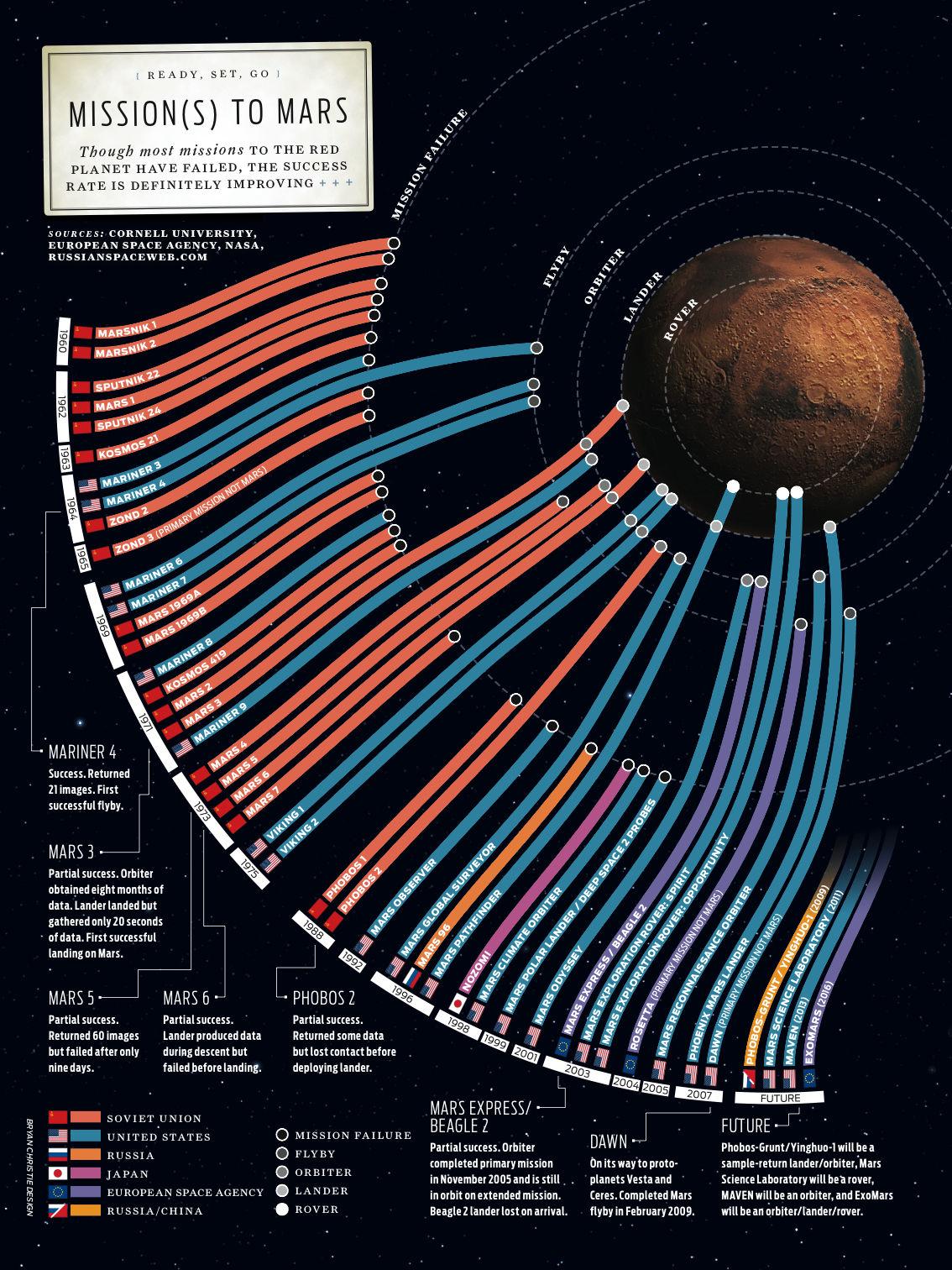
Martian Geology
On Mars, we see volcanoes, canyons, and impact basins much like the ones on Earth. The yellows scattered across the map indicate meteor impacts of varying size while the swaths of red indicate volcanoes and their associated lava flows. The varying colors of brown indicate the cratered highlands and midlands that make up most of the southern hemisphere.
The planet appears asymmetric. Most of the southern hemisphere is heavily cratered and resembles the moon’s highlands. In contrast, the northern hemisphere is sparsely cratered and has many large volcanoes.
Mars is approximately one-half the diameter of the Earth, but both planets have the same amount of dry land. This is because the current surface of Mars has no liquid water.
Mars and Earth are very different planets when it comes to temperature, size, and atmosphere, but geologic processes on the two planets are eerily similar. The sheer size of some landforms on Mars would shadow over similar features on Earth because of the lack of water erosion. This lack of erosion has preserved billion year-old geologic features.
The tallest mountain on Mars and in the solar system is Olympus Mons, and it is two and a half times taller than Mt. Everest. A Martian canyon system, called Valles Marineris, is the length of the entire continental United States and three times deeper than the Grand Canyon.
Mars Colony: Location, Location, Location
The first step to building a colony is to figure out where the best chance of survival is. For Mars, some researchers have identified the planet’s poles, which contain millennia-old ice deposits. These are thought to contain large amounts of ice, which mars settlers could extract and turn into liquid water.
The poles also host other natural resources, such as carbon dioxide, iron, aluminum, silicon and sulfur, which could be used to make glass, brick and plastic. Furthermore, the planet’s atmosphere contains enough hydrogen and methanol for fuel.
Closing the Distance
The map above represents the culmination of centuries of work which we are lucky enough to view here on a computer, conveniently online for us to appreciate and wonder what life’s like on the surface of Mars.
Who knows what more exploration will reveal.
https://www.zerohedge.com/news/2019-...ogy-red-planetIf you're gonna fight, fight like you're the third monkey on the ramp to Noah's Ark... and brother its starting to rain. Join our efforts to Secure America's Borders and End Illegal Immigration by Joining ALIPAC's E-Mail Alerts network (CLICK HERE)
-
07-10-2019, 06:57 PM #46
YouTube Video https://www.youtube.com/watch?v=ePLzbNCWljgIf you're gonna fight, fight like you're the third monkey on the ramp to Noah's Ark... and brother its starting to rain. Join our efforts to Secure America's Borders and End Illegal Immigration by Joining ALIPAC's E-Mail Alerts network (CLICK HERE)
-
07-10-2019, 06:58 PM #47
YouTube Video https://www.youtube.com/watch?v=UpkET-Y7tZsIf you're gonna fight, fight like you're the third monkey on the ramp to Noah's Ark... and brother its starting to rain. Join our efforts to Secure America's Borders and End Illegal Immigration by Joining ALIPAC's E-Mail Alerts network (CLICK HERE)
-
07-10-2019, 07:01 PM #48
YouTube Videohttps://www.youtube.com/watch?v=IQL53eQ0cNAIf you're gonna fight, fight like you're the third monkey on the ramp to Noah's Ark... and brother its starting to rain. Join our efforts to Secure America's Borders and End Illegal Immigration by Joining ALIPAC's E-Mail Alerts network (CLICK HERE)
-
07-13-2019, 11:34 PM #49Valleys and channels on Mars reveal evidence of ancient groundwater
Saturday, July 13, 2019 by: Edsel Cook
1,030 Views
Furthermore, the European Space Agency (ESA) research team uncovered evidence of mineral deposits in those craters. On Earth, those same minerals contributed to the appearance of organic life.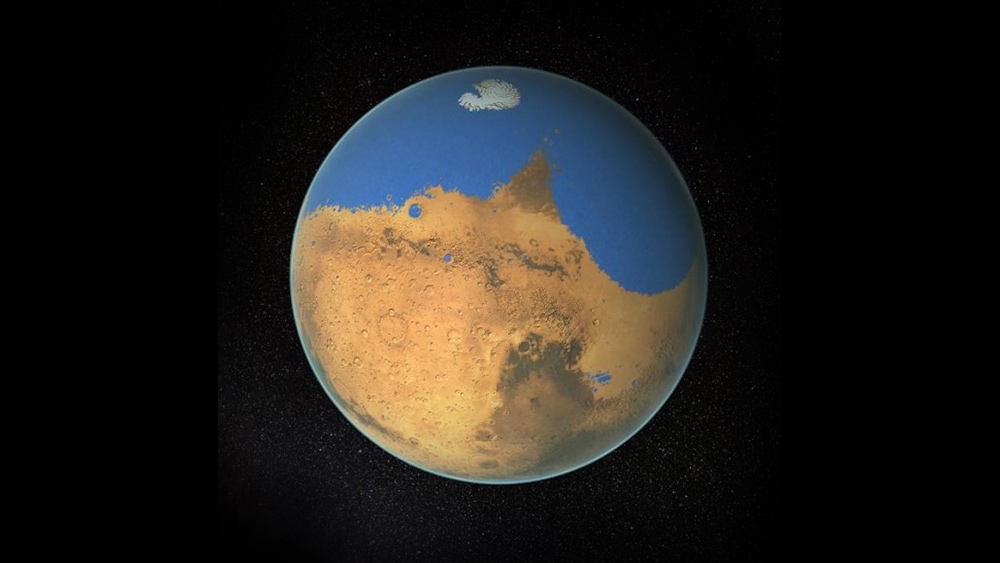
(Natural News) The deepest parts of the craters that dot the dusty Martian landscape conceal channels and valleys carved out by the passage of liquid water eons ago. European researchers consider them to be signs that Mars possessed a massive groundwater system in its distant past.
In a recent statement, ESA researcher Dmitri Titov stressed the importance of these findings. The formations and minerals mark the regions that had the best chance of harboring evidence of past life on Mars.
The discovery was made by the agency’s Mars Express space probe. Orbiting the Red Planet since 2003, it uncovered geological proof that Mars once hosted a large network of subterranean lakes. Branching channels serve as the connections between these underground bodies of water.
NASA earlier theorized that the Martian underground might contain giant cliffs of ice.
The surface water of ancient Mars moved underground
“Early Mars was a watery world,” said Francesco Salese, a Dutch researcher from Utrecht University. “But as the planet’s climate changed, this water retreated below the surface to form pools and ‘groundwater.’”
Researchers argued over the amount of water present on the surface of Mars. They also disagreed about the role played by the liquid.
Using the sensors of the Mars Express orbiter, Salese and his colleagues tracked the migration of water from the surface to below the red soil of Mars. They announced the first geological evidence that Mars used to have a groundwater system throughout the planet.
Recent studies indicated that Mars used to enjoy warmer temperatures in the past. It seemed that the atmosphere of the planet during that time was thicker and retained more heat. The temperatures appeared to be congenial for the movement of liquid water on the ground.
In the new ESA research effort, Mars Express scanned 24 deep craters in the northern half of the planet. The bottoms of the formations reached depths of 2.5 miles (4 km) beneath the value used as the Martian “sea level.”
Mars currently does not have any sea on its surface. But it used to have one. Instead, researchers calculated an approximate sea level using atmospheric pressure and elevation.
“We think that this ocean may have connected to a system of underground lakes that spread across the entire planet,” remarked D’Annunzio University researcher Gian Gabriele Ori, the co-author of the paper. “These lakes would have existed around 3.5 billion years ago, so [they] may have been contemporaries of a Martian ocean.” (Related: Geological curiosity: Mars “blueberries” reveal what ancient Mars may have looked like.)
Deep Martian craters hold minerals important for basic life
They reported finding evidence of carbonates, silicates, and more than one type of clay in the five deepest craters surveyed by Mars Express. The minerals served as basic ingredients for organic life on Earth, so their presence suggested that ancient Mars also possessed the ingredients to support simple organisms.
Before their latest Mars-related announcement, ESA also released photographs of the southern highlands area of Mars. The rock formations in the region are billions of years old and have undergone considerable erosion over the eons.
Mars Express took snapshots of an area found between the Hellas and Huygens craters. Despite the destructive effects of erosion, several valleys displayed dendritic structures – familiar shapes that resembled trees – and riverbeds on Earth.
The dendritic structures suggested that the Martian surface used to be covered in water. The new ESA study suggests that much of that water went underground and formed subterranean lakes.
Sources include:
Space.com
ESA.int
https://www.naturalnews.com/2019-07-...oundwater.htmlIf you're gonna fight, fight like you're the third monkey on the ramp to Noah's Ark... and brother its starting to rain. Join our efforts to Secure America's Borders and End Illegal Immigration by Joining ALIPAC's E-Mail Alerts network (CLICK HERE)
Similar Threads
-
Trump Reveals Policy Goals: "Building That Wall", End "War On Coal", Repeal Obamacare
By Jean in forum illegal immigration News Stories & ReportsReplies: 0Last Post: 11-10-2016, 05:54 PM -
Fox News Cites Birther To Claim NASA "Faked" Global Warming
By JohnDoe2 in forum Other Topics News and IssuesReplies: 3Last Post: 06-25-2014, 05:02 PM -
Dianne Feinstein: ‘It’s Legal to Hunt Humans In the US’ <--"Thoughts of a Crackhead"
By AirborneSapper7 in forum Other Topics News and IssuesReplies: 5Last Post: 04-01-2013, 12:04 PM -
Humans Lose, Robots Win in New Defense Budget -"terminator sky net" is here
By AirborneSapper7 in forum Other Topics News and IssuesReplies: 1Last Post: 01-27-2012, 09:47 PM -
TUSD appeal to save "Ethnic Studies" reveals cult
By Dixie in forum illegal immigration News Stories & ReportsReplies: 2Last Post: 08-22-2011, 04:42 PM


 18Likes
18Likes LinkBack URL
LinkBack URL About LinkBacks
About LinkBacks




 Reply With Quote
Reply With Quote


Durbin pushes voting rights for illegal aliens without public...
04-25-2024, 09:10 PM in Non-Citizen & illegal migrant voters